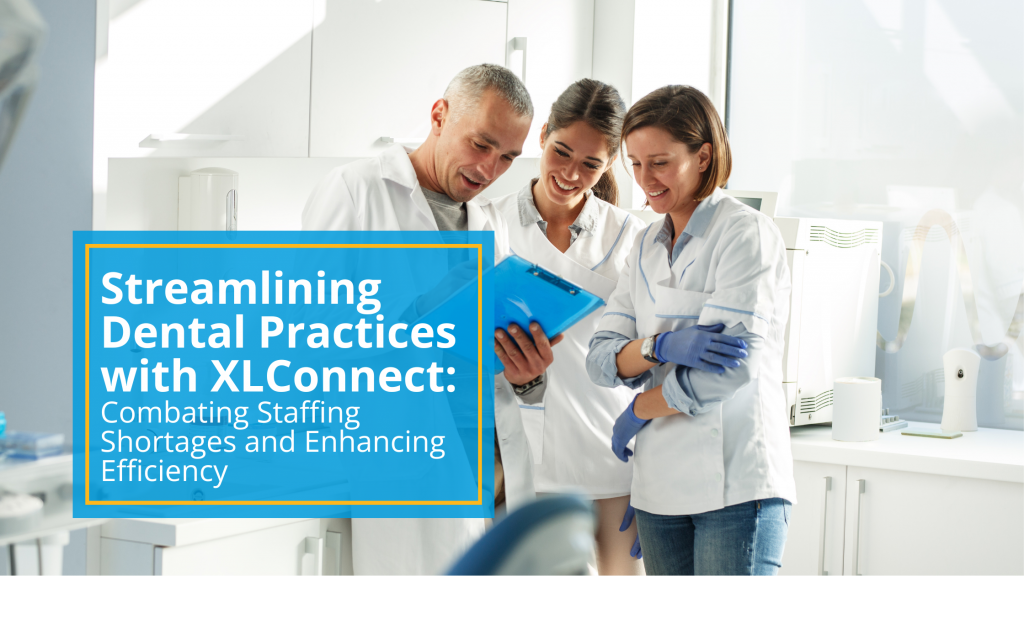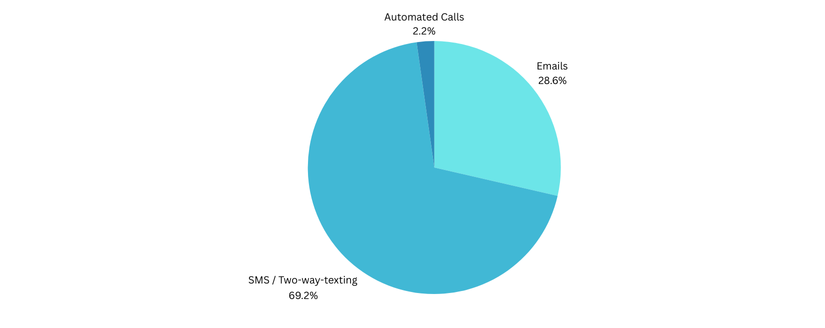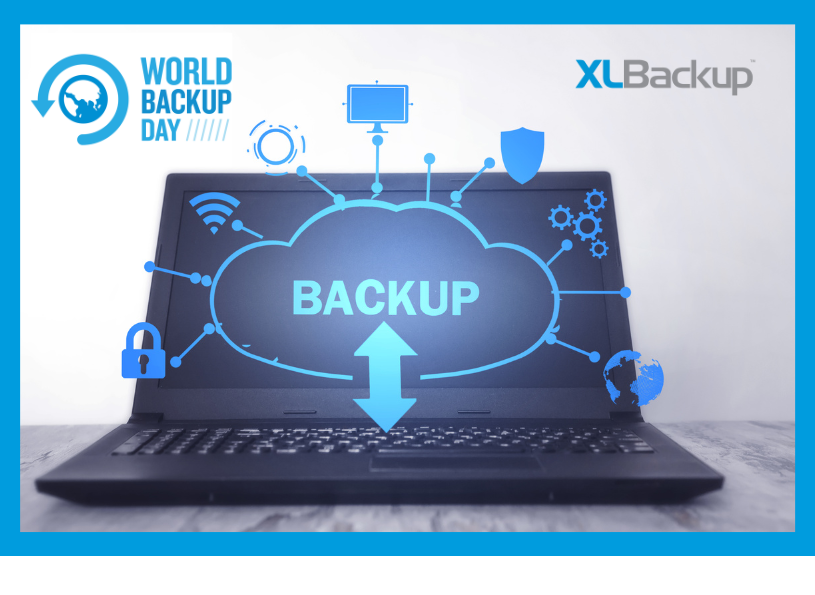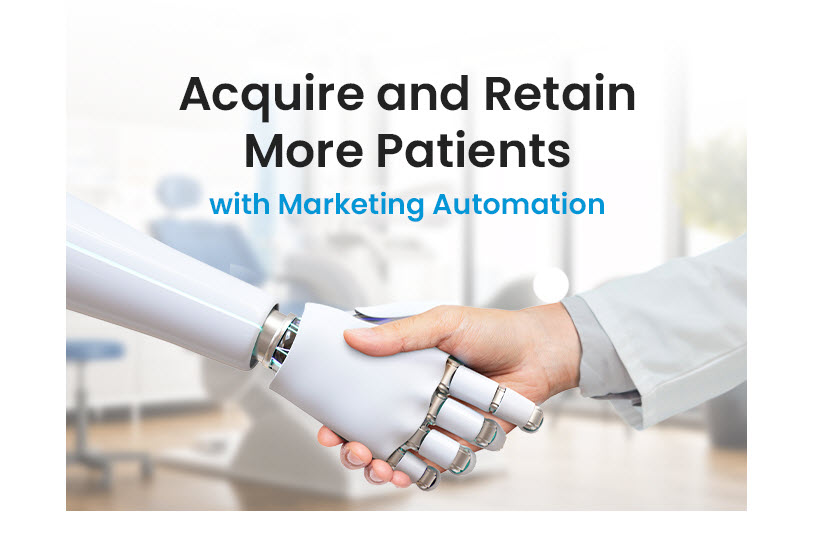Streamlining Dental Practices with XLConnect: Combating Staffing Shortages and Enhancing Efficiency
Posted July 11, 2024 by Jennifer G
The dental industry is currently grappling with significant staffing shortages, which threaten to impact the quality of care provided to patients. This issue, coupled with the increasing administrative burden on existing staff, underscores the urgent need for innovative solutions.
The American Dental Association (ADA) has reported that these shortages are primarily driven by factors such as burnout, safety concerns, and the overall impact of the COVID-19 pandemic (HR for Health) . A survey conducted by the ADA highlighted that a significant percentage of dental practices are experiencing difficulties in recruiting and retaining staff, with many dental hygienists and assistants considering leaving the field due to the stressful working conditions.
These staffing shortages have created a ripple effect, leading to increased workloads for the remaining staff, longer patient wait times, and, in some cases, reduced availability of services. This situation necessitates a strategic approach to ensure that dental practices can continue to provide high-quality care despite the challenges.
Enter XLConnect, the patient engagement tool from XLDent, which not only addresses these staffing challenges but also significantly boosts operational efficiency through time savings and enhanced patient engagement.
Patient engagement tools like XLConnect play a crucial role in mitigating the impact of staffing shortages. By automating various administrative and patient communication tasks, these tools significantly reduce the workload on dental staff, allowing them to focus more on direct patient care.
Here are some key ways in which XLConnect can help:
1. Automated Appointment Reminders:
- Time Savings: XLConnect automates appointment reminders through emails, SMS, and automated calls, ensuring that patients are reminded of their appointments without the need for manual intervention. This reduces the administrative burden on staff and minimizes the risk of no-shows. Automated reminders can reduce no-shows by up to 78%.
- Improved Efficiency: By automating these reminders, dental practices can ensure that their schedules are optimized, leading to better utilization of clinical time and resources.
2. Two-Way Text Messaging:
- Enhanced Patient Communication: XLConnect’s two-way text messaging feature allows patients to easily confirm, reschedule, or cancel appointments. This real-time communication reduces the need for phone calls and follow-ups, freeing up staff time for more critical tasks.
- Patient Satisfaction: Digital communication methods, such as text messages, are preferred by patients for their convenience and immediacy. An Accenture survey found that 60% of patients wanted to use technology more often to communicate with their healthcare providers. Analysis of XLDent client usage revealed that SMS and two-way texting are utilized nearly 70% of the time by patients, highlighting the importance of this channel for effective engagement. By leveraging these preferred communication methods, XLConnect ensures high engagement rates and enhances overall patient satisfaction.
3. Patient Surveys and Feedback:
- Quality Improvement: XLConnect can automatically send patient satisfaction surveys and collect feedback, providing valuable insights into the patient’s experience. This data can help practices identify areas for improvement and enhance the quality of care.
- Reduced Administrative Work: Automating the feedback collection process eliminates the need for manual data entry and analysis, saving time and reducing errors.
Combining Time Savings with ROI
Implementing XLConnect not only addresses staffing challenges but also offers significant returns on investment (ROI) through increased efficiency and cost savings. Here are some ways in which dental practices can benefit:
1. Reduced Administrative Costs:
By automating tasks such as appointment reminders and patient communication, practices can reduce the need for additional administrative staff, leading to cost savings. According to a report by McKinsey, automation in healthcare can reduce administrative costs by up to 30%.
2. Increased Revenue:
Reducing no-shows and optimizing appointment schedules can lead to increased patient visits and revenue. The ADA has reported that practices using automated reminders and patient engagement tools see a notable increase in confirmed appointments, which directly impacts their bottom line.
3. Improved Patient Retention:
Engaging patients through regular communication and feedback mechanisms fosters a stronger patient-provider relationship, leading to higher patient retention rates. Satisfied patients are more likely to return for future visits and recommend the practice to others, driving growth and profitability.
4. Enhanced Staff Productivity:
With administrative tasks automated, dental staff can focus on providing high-quality care, improving job satisfaction and reducing burnout. This not only helps retain existing staff but also makes the practice more attractive to potential recruits.
Case Study: A Real-World Example
To illustrate the impact of XLConnect, let’s consider a hypothetical case study of a mid-sized dental practice facing staffing challenges. Before implementing XLConnect, the practice struggled with high no-show rates, long patient wait times, and an overburdened administrative staff. By integrating XLConnect into their operations, the practice achieved the following results:
- Reduced No-Shows: The no-show rate dropped from 20% to 4%, thanks to automated appointment reminders. This resulted in an additional 15 patient visits per week, increasing monthly revenue by approximately $7,500.
- Time Savings: The administrative staff saved an average of 10 hours per week previously spent on making phone calls and sending reminders. This allowed them to focus on more complex tasks and improve overall efficiency.
- Improved Patient Satisfaction: Patient feedback collected through automated surveys indicated a 25% increase in overall satisfaction, with many patients appreciating the convenience of digital communication.
- Cost Savings: The practice reduced its administrative staffing costs by 15%, as fewer staff were needed to manage patient communications and scheduling.
Conclusion
The dental industry’s staffing shortages present a significant challenge, but tools like XLConnect offer a powerful solution. By automating patient engagement and communication tasks, XLConnect helps practices save time, reduce costs, and improve patient satisfaction. The resulting efficiency gains and financial benefits make it an invaluable investment for any dental practice looking to navigate the complexities of today’s healthcare landscape.
In summary, embracing technology like XLConnect can transform the way dental practices operate, enabling them to thrive even in the face of staffing challenges. As the industry continues to evolve, leveraging such innovative solutions will be crucial for maintaining high standards of care and ensuring the long-term success of dental practices.
For more information on how XLConnect can benefit your practice, visit the XLDent website. By integrating advanced patient engagement tools into your operations, you can enhance efficiency, improve patient outcomes, and secure a brighter future for your practice.







 Subscribe
Subscribe Subscribe
Subscribe



